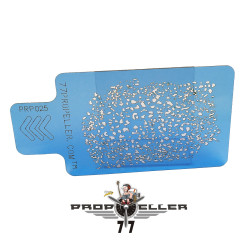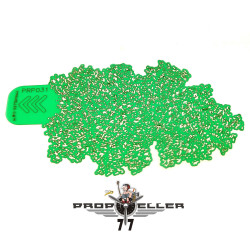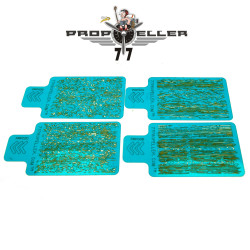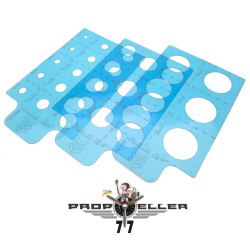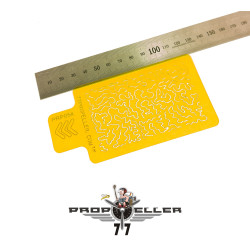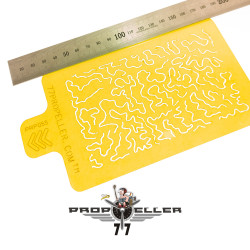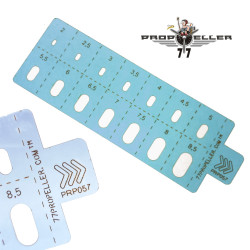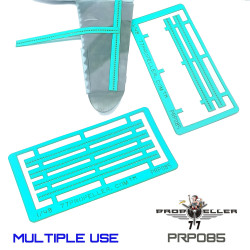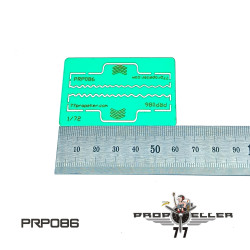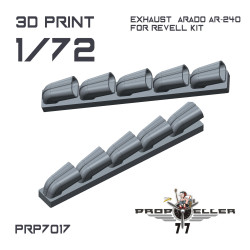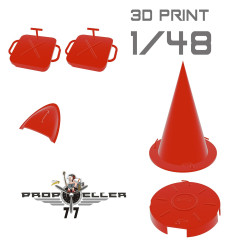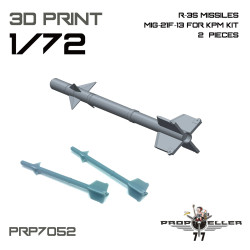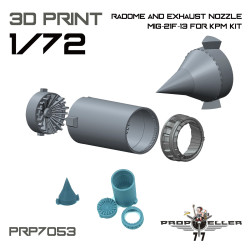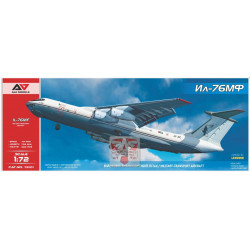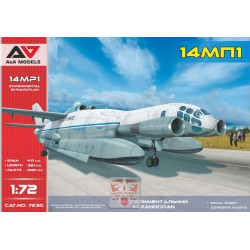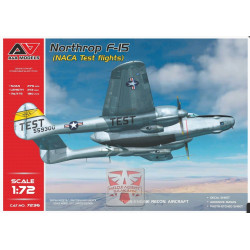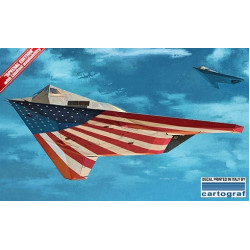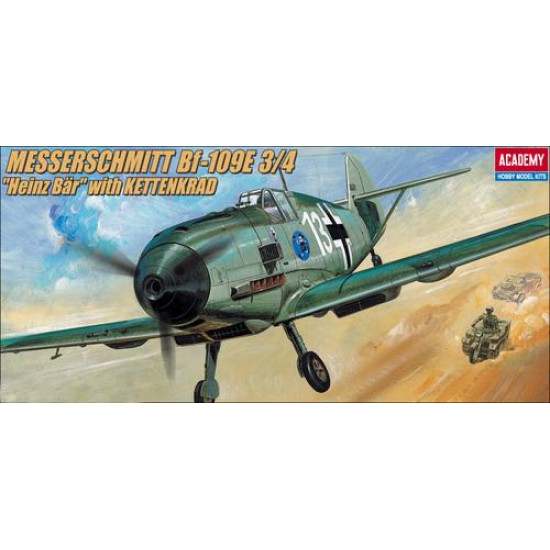
Fighter Messerschmitt Bf 109E with Kubelwagen
1/72
Academy AC2214
Manufacturer: Academy
Scale: 1/72
Material: Plastic
Paint: Unpainted, Unassembled, Kit do not contain paints and glue.
Condition: New in Box
The Messerschmitt Bf 109, often called Me 109 (most often by Allied pilots and aircrew), was a German World War II fighter aircraft designed by Willy Messerschmitt and Robert Lusser during the early to mid-1930s. It was one of the first truly modern fighters of the era, including such features as all-metalmonocoque construction, a closed canopy, a retractable landing gear, and was powered by a liquid-cooled, inverted-V12 aero engine.
The Bf 109 first saw operational service during the Spanish Civil War and was still in service at the dawn of the jet age at the end of World War II, during which time it was the backbone of the Luftwaffe's fighter force. From the end of 1941 the Bf 109 was supplemented by the Focke-Wulf Fw 190.
Originally conceived as an interceptor, later models were developed to fulfill multiple tasks, serving as bomber escort, fighter-bomber, day-, night-, all-weather fighter, ground-attack aircraft, and as reconnaissance aircraft. It was supplied to and operated by several states during World War II, and served with several countries for many years after the war. The Bf 109 was the most produced fighter aircraft in history, with a total of 33,984 airframes produced from 1936 up to April 1945.
The Bf 109 was flown by the three top-scoring German fighter aces of World War II, who claimed 928 victories among them while flying withJagdgeschwader 52, mainly on the Eastern Front, as well as by Hans-Joachim Marseille, the highest scoring German ace in the North African Campaign. It was also flown by several other aces from Germany's allies, notably Finn Ilmari Juutilainen, the highest scoring non-German ace on the type with 58 victories flying the Bf 109G, and pilots from Italy, Romania, Croatia, Bulgaria andHungary. Through constant development, the Bf 109 remained competitive with the latest Allied fighter aircraft until the end of the war.Design work on Messerschmitt Project Number P.1034 began in March 1934, just three weeks after the development contract was awarded. The basic mock-up was completed by May, and a more detailed design mock-up was ready by January 1935. The RLM designated the design as type "Bf 109," the next available from a block of numbers assigned to BFW.
The first prototype (Versuchsflugzeug 1 or V1), with civilian registration D-IABI, was completed by May 1935, but the new German engines were not yet ready. In order to get the "R III" designs into the air, the RLM acquired four Rolls-Royce Kestrel VI engines by trading Rolls-Royce a Heinkel He 70 Blitz for use as an engine test-bed. Messerschmitt received two of these engines and adapted the engine mounts of V1 to take the V-12 engine upright. V1 made its maiden flight at the end of May 1935 at the airfield located in the southernmost Augsburg neighborhood of Haunstetten, piloted by Hans-Dietrich "Bubi" Knoetzsch. After four months of flight testing, the aircraft was delivered in September to the Luftwaffe's central test centre at theErprobungsstelle Rechlin to take part in the design competition.
In the late summer of 1935, the first Jumo engines became available so V2 was completed in October using the 449 kW (600 hp) Jumo 210A engine. V3 followed, the first to be mounted with guns, but it did not fly until May 1936 due to a delay in procuring another Jumo 210 engine.s with the earlier Bf 108, the new design was based on Messerschmitt's "lightweight construction" principle, which aimed to minimise the number of separate parts in the aircraft. Examples of this could be found in the use of two large, complex brackets which were fitted to the firewall. These brackets incorporated the lower engine mounts and landing gear pivot point into one unit. A large forging attached to the firewall housed the main spar pick-up points, and carried most of the wing loads. Contemporary design practice was usually to have these main load-bearing structures mounted on different parts of the airframe, with the loads being distributed through the structure via a series of strong-points. By concentrating the loads in the firewall, the structure of the Bf 109 could be made relatively light and uncomplicated.
An advantage of this design was that the main landing gear, which retracted through an 85-degree angle, was attached to the fuselage, making it possible to completely remove the wings for servicing without additional equipment to support the fuselage. It also allowed simplification of the wing structure, since it did not have to bear the loads imposed during takeoff or landing. The one major drawback of this landing gear arrangement was its narrow wheel track, making the aircraft unstable while on the ground. To increase stability, the legs were splayed outward somewhat, creating another problem in that the loads imposed during takeoff and landing were transferred up through the legs at an angle.
The small rudder of the Bf 109 was relatively ineffective at controlling the strong swing created by the powerful slipstream of the propeller during the early portion of the takeoff roll, and this sideways drift created disproportionate loads on the wheel opposite to the swing. If the forces imposed were large enough, the pivot point broke and the landing gear leg would collapse outward into its bay.Experienced pilots reported that the swing was easy to control, but some of the less-experienced pilots lost fighters on takeoff.
Because of the large ground angle caused by the long legs, forward visibility while on the ground was very poor, a problem exacerbated by the sideways-opening canopy. This meant that pilots had to taxi in a sinuous fashion which also imposed stresses on the splayed undercarriage legs. Ground accidents were a problem with rookie pilots, especially during the later stages of the war when pilots received less training before being sent to operational units.At least 10% of all Bf 109s were lost in takeoff and landing accidents, 1,500 of which occurred between 1939 and 1941. The installation of a fixed "tall" tailwheel on some of the late G-10s and 14s and the K-series helped alleviate the problem to a large extent.
| General Product Info | |
| Material | NOT SET |
| Scale | 1/72 |
| Type | Fighter / Interceptor |
We have the lowest worldwide shipping. And it's totally simple.
EUROPE, USA, CANADA TURKEY, ISRAEL, EGYPT, UE CHINA, JAPAN, HK, S.KOREA | AU NZ MX South America, Asia | |
| Order weight up to 0.22kg or 0.48lb | US$ 8.90 | US$ 8.90 |
| Order weight up to 0.44kg or 0.97lb | US$ 13.95 | US$ 17.90 |
| Order weight over 0.44kg or 0.97lb | US$ 19.99 | US$ 29.99 |
| Order total over $150 | FREE | PROMO US$ 19.99 |
Shipping to some countries not qualifies for the free shipping option but costs not over $29.99 for any sized order. Sorry for that, your location is too far.
- Stock: Out Of Stock
- Model: AC2214
- Weight: 0.55lb
- DATE ADDED: 01/11/2014








-250x250w.jpg)

















